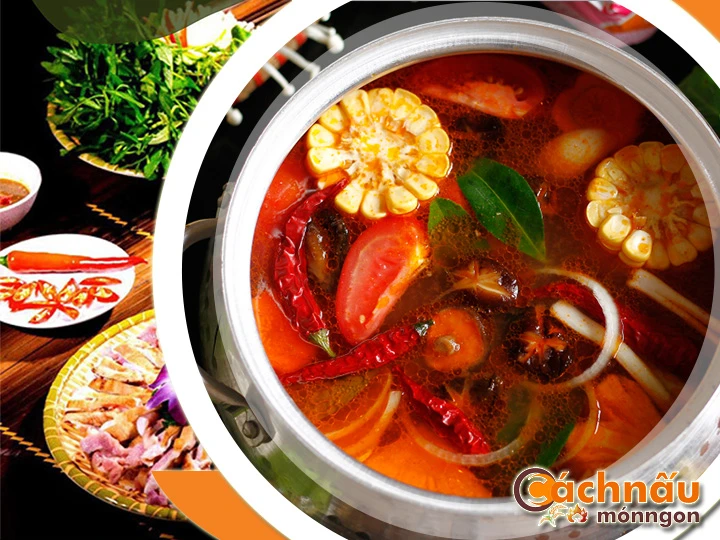Explore the Best Rabbit Hot Pot Guide to Enjoy - Lẩu thỏ
Explore the Best Rabbit Hot Pot Guide to Enjoy - Lẩu thỏ
Blog Article
Hot pot rabbit, a tasty and time-honored cuisine, has been prized across different food cultures for centuries.

This comprehensive guide explores all aspects you need to discover about rabbit hot pot, from its historical roots to present-day styles, wellness benefits, and methodical instructions for creating the ideal dish at home. Whether you are a veteran chef or a inquisitive newcomer, this guide will encourage and guide you to achieve expertise of rabbit hot pot.
UNVEILING THE PAST AND CULTURE CONCERNING {BRAISED RABBIT DISH|HEARTY RABBIT MEAL|RABBIT HOT POT|RABBIT STEW|BUNNY CASSEROLE|RABBIT CUISINE|STEWED RABBIT
Rabbit hot pot stands as a one-of-a-kind and traditional dish with rich cultural roots in diverse locales. Its demand stems not only from its hearty flavor but also from its heritage and meaning.
Rabbit hot pot represents a distinctive and heritage-rich dish with rich cultural connections in diverse locales. Its appeal stems not only from its flavorful flavor but also from its heritage and meaning.
- Historical Beginnings: Rabbit stew came from agricultural regions where small game were a popular, healthy food source. In early Chinese history, it was a household staple, particularly during special occasions.
- Gaining Popularity: In Western regions like Belgium, rabbit was commonly found in hearty meals, adapting into modern versions of rabbit stew as the dish became internationally recognized.
2. Stewed Rabbit influencing Asian Traditions.
- Throughout China: Known as the traditional rabbit hot pot, rabbit hot pot is widely known in Sichuan-style cooking, famous for its fiery flavors and often enjoyed during special celebrations.
- Within Korea and Japan: While relatively rare, rabbit hot pot is infrequently served as a medicinal dish in South Korea, or based on nabemono hot pot in Japanese cuisine, highlighting local produce and herbs.
- Within Vietnam: Although rabbit hot pot is not a common daily dish, it is famous during special occasions or in farming regions where rabbit meat is commonly found. It is often made using distinctive spices such as lemongrass, zesty ginger, and hot chili, paired with fresh vegetables like swamp cabbage, mustard greens, or mimosa vegetables. This dish is highly valued for its singular taste and healthy attributes, frequently relished at special moments with close ones.
Ở vùng đất Việt Nam, tuy không được coi là món ăn thông dụng hằng ngày, nhưng thường thấy trong các sự kiện lớn hoặc ở những vùng nông thôn, nơi có thịt thỏ dồi dào. Thường được tẩm ướp với gia vị đặc trưng như sả, vị cay từ gừng, và ớt đỏ, kết hợp với rau tươi bao gồm rau sống khác. Món ăn này nổi bật trong các bữa tiệc nhờ hương vị không trộn lẫn và lợi ích sức khỏe, thường là món ăn chính trong các bữa tiệc gia đình.
3. Stewed Rabbit integral to Western Food Culture.
- Within France: Frequently enjoyed as a rich stew with a red wine base, fragrant herbs such as rosemary, and vegetables like carrots and potatoes. Rabbit hot pot is a culinary staple for festive feasts.
- Italy: The dish named “Cacciatore”, featuring rabbit stewed in tomato and wine sauce, is a historical predecessor of rabbit-based hot pots.
HOW TO COOK RABBIT HOT POT: RECIPES AND TECHNIQUES
Rabbit hot pot is a adaptable dish that merges natural components, aromatic broths, and specialized methods to create a filling and delicious feast. Below are essential tips into the key recipes and techniques to perfect rabbit hot pot.
Basic Recipe for Rabbit Hot Pot
* Ingredients:
- 1 whole rabbit (sectioned)
- 4 cups of broth (chicken)
- Vegetables (mushrooms)
- Spices and herbs (garlic)
- Seasonings (pepper)
- Optional: rice for serving
* Steps:
- Prepare Your Meat: Clean and section the rabbit into pieces. Season with salt, pepper, and a splash of soy sauce for half an hour to enhance the flavor.
- Create the Broth: Heat a pot with a small amount of oil. Cook minced garlic and ginger until golden. Add your preferred broth and bring it to a boil.
- Cook the Meat: Add the rabbit pieces into the pot and let them gently boil on low heat for 30-40 minutes until tender.
- Add Vegetables: Add your preferred vegetables and cook until they are tender but still vibrant.
- Plate Up: Transfer the hot pot to a serving dish. Serve with dipping sauces and side options like rice or noodles.
Key Techniques for Cooking Rabbit Hot Pot
- Seasoning:
. Marinate the rabbit with a blend of salt, pepper, and aromatics to amplify its base flavor.
. For more complexity, use soy sauce or a mix of fragrant herbs.
- Building Layers of Flavor:
. Start by simmering the rabbit in the broth to extract its essence.
. Gradually add vegetables based on their cooking times.
- Cooking Time:
. Avoid overcooking the rabbit, as it can turn chewy.
. Test for doneness by checking if the meat easily separates from the bone.
- Taste Customization:
. Perfect the flavor by adding additional seasonings as needed.
. Experiment with different types of broths, such as herbal-infused variations.
Tips for Success
- Quality Matters: Always choose high-quality rabbit and seasonal vegetables for the highest quality.
- Balance Flavors: Be mindful of the sweetness in the broth. Sample and tweak frequently during cooking.
- Creative Accompaniments: Offer a variety of sauces like spicy garlic dip or soy-based dips to enrich the dining experience.
- Serving Style: Use a tabletop cooker or serve the hot pot at the center of the table to encourage communal dining.
With mastery of these cooking techniques, you can make a rabbit hot pot that’s both flavorful and visually appealing, ensuring it becomes a star attraction for any meal or công thức lẩu thỏ occasion.
Report this page